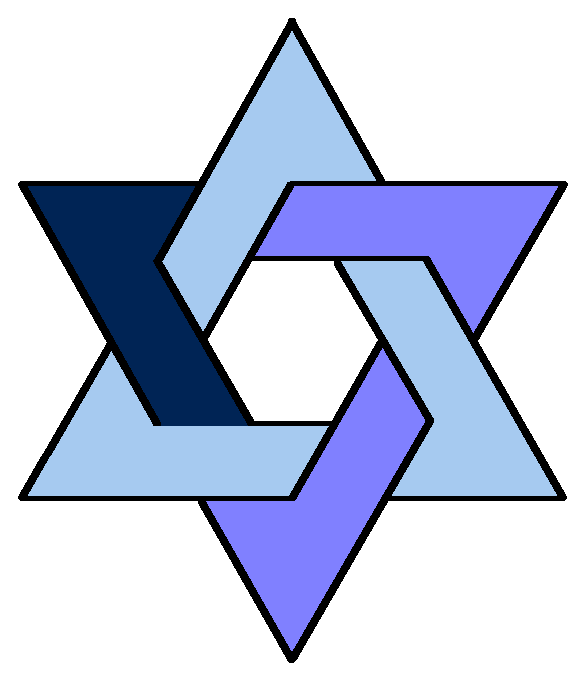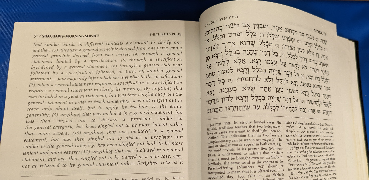Please note that this page contain the name of God.
If you print it out, please treat it with appropriate respect.If you do not have experience reading transliteration
please see the Guide to Transliteration.
The Shema is one of only two prayers that are specifically commanded in Torah (the other is Birkat Ha-Mazon -- grace after meals). It is the oldest fixed daily prayer in Judaism, recited morning and night since ancient times. It consists of three biblical passages, two of which specifically say to speak of these things "when you lie down and when you rise up." This commandment is fulfilled by including the Shema in the liturgy for Ma'ariv (evening services) and Shacharit (morning services). Traditional prayerbooks also include a Bedtime Shema, a series of passages including the Shema to be read at home before going to bed at night. Note that, as in most Jewish texts, it puts evening before morning, expressing once again the idea that the day starts at night.
The first part of the Shema begins with one of the best-known, most fundamental expressions of Jewish belief, and the one from which this prayer gets its name: Shema Yisra'el... (Hear, Israel). This expression is so fundamental that the most liberal Reform synagogue I know has these words carved on the outside of the building in foot-high letters (albeit in English). The end of that line, The Lord is One, expresses some core ideas about Judaism: monotheism (there is only one god) and that God is a single, unified whole (any attempt to describe Him in attributes or pieces is merely an accommodation of our limited human understanding).
The second line of this part (Barukh sheim k'vod...) is actually not part of this passage from the Torah. It doesn't even appear anywhere in the Bible. It's a congregational response from the days of the Temple: whenever the High Priest would say the Divine Name, the people would respond with this line. Today, it is not said aloud except during Yom Kippur services. The rest of the time, it is read only in an undertone.
Later in this paragraph, it commands two important symbols of Judaism: tefillin and mezuzot. Mezuzot are cases containing passages of scripture that are attached to the doorposts of the house. Most Jewish houses have these on their doorposts. Tefillin are strapped to the arm and the forehead between the eyes during weekday morning services. Most Jews today don't attend weekday services, so this is a less common observance. The Hebrew word used in this passage for the thing between the eyes is totafot, and the meaning of the word is not clear. The root, Tet-Tet-Peh, does not occur in the Bible in any other context. Many Christian Bibles translate the word as "frontlets" but I have no idea what that's supposed to mean. Many Orthodox sources simply translate the word as tefillin. Some Conservative prayer books translate it as "reminder," which is a good understanding of the purpose.
Part 3 introduces an third important symbol: tzitzit.
in an undertone
The second part of the Shema repeats many of the themes from the first part, but adds promises of rewards and punishments.
This third part of the Shema does not mention the need to speak of these things morning and night. It talks about the tzitzit (fringes) that are traditionally worn like a string around the finger as a reminder of the commandments. It is included in the Shema because, like the tefillin and mezuzot that are commanded in the first two paragraphs, tzitzit are a symbol that serves as a reminder of the commandments. The passage is also included to fulfill the mitzvah to remember the Exodus from Egypt every day of our lives.
In services, the Shema is normally followed one of two other prayers: in the evening, Emet ve'Emunah (True and Faithful), which emphasizes His powerful deeds for Israel (deliverance from tyrants, etc.); in the morning, Emet v'Yatziv (True and Certain), which emphasizes His characteristics (fair, faithful, awesome, powerful, etc.). The prayers are tied together when the chazzan loudly proclaims the last two words of the Shema with he first word of the next prayer: Adonai Eloheikhem Emes! (The Lord, Your God, is True! or It is True that the Lord is our God!)
 Tzitzit and Tallit
Tzitzit and Tallit Common Prayers and Blessings
Common Prayers and Blessings Prayers and Blessings
Prayers and Blessings Jewish Liturgy
Jewish Liturgy